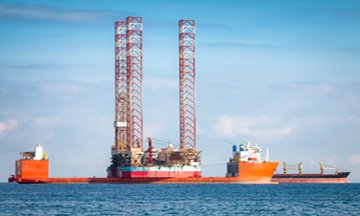Oil and Gas Financial Modelling Course
| Date | Format | Duration | Fees | |
|---|---|---|---|---|
| 19 May - 23 May, 2024 | Live Online | 5 Days | $2250 | Register |
| 10 Jun - 14 Jun, 2024 | Live Online | 5 Days | $2250 | Register |
| 08 Jul - 12 Jul, 2024 | Live Online | 5 Days | $2250 | Register |
| 26 Aug - 30 Aug, 2024 | Live Online | 5 Days | $2250 | Register |
| 26 Aug - 30 Aug, 2024 | Live Online | 5 Days | $2250 | Register |
| 28 Oct - 01 Nov, 2024 | Live Online | 5 Days | $2250 | Register |
| 18 Nov - 06 Dec, 2024 | Live Online | 15 Days | $6745 | Register |
| 22 Dec - 30 Dec, 2024 | Live Online | 7 Days | $3147 | Register |
| Date | Venue | Duration | Fees | |
|---|---|---|---|---|
| 20 May - 24 May, 2024 | Dubai | 5 Days | $4750 | Register |
| 02 Jun - 06 Jun, 2024 | Amman | 5 Days | $4950 | Register |
| 03 Jun - 07 Jun, 2024 | Dubai | 5 Days | $4750 | Register |
| 24 Jun - 28 Jun, 2024 | Berlin | 5 Days | $5695 | Register |
| 08 Jul - 12 Jul, 2024 | Dubai | 5 Days | $4750 | Register |
| 29 Jul - 02 Aug, 2024 | Nairobi | 5 Days | $4950 | Register |
| 05 Aug - 09 Aug, 2024 | Dubai | 5 Days | $4750 | Register |
| 12 Aug - 16 Aug, 2024 | Johannesburg | 5 Days | $4950 | Register |
| 12 Aug - 16 Aug, 2024 | Dubai | 5 Days | $4750 | Register |
| 14 Oct - 18 Oct, 2024 | Dubai | 5 Days | $4750 | Register |
| 11 Nov - 29 Nov, 2024 | Johannesburg | 15 Days | $13500 | Register |
| 11 Nov - 15 Nov, 2024 | Dubai | 5 Days | $4750 | Register |
| 02 Dec - 06 Dec, 2024 | Dubai | 5 Days | $4750 | Register |
| 08 Dec - 19 Dec, 2024 | Doha | 10 Days | $9150 | Register |
Course Overview
What is a net asset value model oil and gas?
An Oil and Gas Financial Modeller uses its expertise in energy assets or projects to develop a model known as Net Asset Value (NAV). The Oil and Gas Financial Modelling involves advanced-level skills of MS Excel for analysis and gaining a competitive advantage over the competitors. The Exploration and Production (E&P) segment and estimating the cash flow are the key areas that an Oil and Gas Financial Modeller must know.
What is asset in oil and gas?
In this course, you will learn MS Excel from the beginning to the advance so that you can excel your competitors with your expert skills. After completing this course, you will be a professional who knows the concepts of Financial Modelling and can apply these concepts in real life and perform the duties and responsibilities of a Financial Modeller efficiently and effectively.
Zoe Talents trains you to become a professional modeler who knows how to develop, analyse and use financial models.
Course Objectives
The key objectives of the Oil & Gas Financial Modelling course are to enable the trainees to:
- Increase the quality of the corporate presentations’ quantity analysis.
- Present the data visually and numerically.
- Determine the discount rate appropriately.
- Effectively use and apply Financial Modelling in the Oil and Gas organizations.
- Know, learn and use investment appraisal techniques.
- Learn Excel techniques for financial modelling and apply them in the Oil and Gas organizations.
- Forecasting and correctly assessing the cost of equity.
- Gain the confidence to question the decisions made based on solid pieces of evidence and reasoning.
- Understand the difference between forecasting and modelling.
- Correct use of statistics for improvement of business’ targets and operations.
- Analyse financial and accounting statements.
- Learn and use DCF, NAV, LBO, and M&A modelling.
- Creating transaction and company analysis.
- Correctly comparing transaction and company analysis for the betterment of the organization.
Training Methodology
Zoe Talent’s courses are designed to meet the needs of the advanced and changing dynamics of the world, and a proper checking procedure is carried out to ensure that all courses meet the current requirements of their respective industries. The trainers are highly-professional and practically involved in their relevant fields. A series of two-way involvement is ensured by role-plays, individual and group activities, major and minor projects, and so on. The critical parts of this training are learning from experience and real-world situations.
Zoe Talents has invented this excellent approach, the Do–Review–Learn–Apply Model, to ensure the best learning experience.
Organisation Benefits
The organizations would be able to achieve the following benefits from expert financial modelers produced by this course:
- Use of current modelling techniques
- Efficient use of analysis for improving business operations
- Effective application financial modelling best practices of the Oil and Gas industry in the organization
- Improved decisions because of in-depth analysis
- Improved capabilities of employees to present data visually for making decisions
- Improvised Excel skills to use to gain maximum advantage for the organization
- High standardized financial documents like financial statements etc
- Correct discount rate
- Confident employees to make forecasts about energy assets and projects
Personal Benefits
The trained and expert financial modelers would receive the following benefits after completing this course:
- Advance level of skills of Excel to use it to get maximum in terms of financial modelling
- Understanding and applying the financial modelling techniques in the Oil and Gas industry
- Confidence to question decisions based on financial modelling due to expert knowledge
- Causing positive impacts on colleagues because of expert skillset and understanding of the industry trends
- Improved analysis ability
- Increased critical thinking ability
- Capabilities to arrange data to set long-term and short-term targets
- They improved and were better able to assess the performance
- Understanding the critical differences between modelling and forecasting and how to use and apply each of them
- Understanding and correctly using business statistics
- Improved ability to present data analysis visually
- Knowing current trends of the industry and working on modelling and techniques accordingly
Who Should Attend?
- Any person who wishes to have a deep understanding of financial modelling and use an advanced level of oil and gas industry skills
- Junior managers who dream to excel in the Oil and Gas industry as financial modelers
- Upper-level management of Oil and Gas Organisation responsible for making decisions
- Midlevel and Senior-level Managers, directly involved in financial modelling tasks in the Oil and Gas companies
- Data analysts and specialists who are preliminary work for presenting and manipulating data
- Accountant and Financial Managers whose core job revolves around financial modelling of Oil and Gas organizations
- Managers, urging to adopt financial modelling as a career
- Specialist in the performance monitoring domain
Course Outline
Following crucial topics are covered in this course that is essential for all successful financial modelers in the Oil and Gas industry:
Module 1: Understanding Oil and Gas (O&G) industry
- Factors determining the process of natural gas and crude oil
- Recent trends in the O&G industry
- Various segments of the O&G organization
- Understanding financial reports in O&G organizations
- Terminology and critical terms of the O&G industry
Module 2: Introduction to financial modelling in the Oil and Gas (O&G) industry
- Developing models
- Oil and Gas prices forecasting
- Volume hedges and prices’ roles
- Preparing balance sheets and comparing them with cash flow statements
Module 3: Different valuation modelling
- The ‘football field’ of the O&G industry
- Significant modelling techniques
- Intrinsic value versus relative value
Module 4: Creation of the NAV model
- Estimating project cash flows
- Assessing the E&P segment value from project cash flows
- Producing reserves and in-ground reserves
- WACC estimation
- Pitfall’s worth avoiding
Module 5: Developing Trading comps model
- Creating benchmarks for evaluation
- Selecting appropriate companies to compare
- Accumulation projections and finance history
- Calculation of LTM results
- Use of treasury stock method
Module 6: Developing transaction comps models
- Purchase premium calculation
- Structures of pricing (walk-away rights, collars, and fixed v/s floating)
Module 7: M/A modelling
- Creation of merger model
Module 8: Beginner level of Excel used in the O&G industry
- Introducing data sets
- Graphical representation of data sets
- Trend analysis
- Time series analysis
- Normal distribution
Module 9: Excel and Statistical analysis
- Mean
- Median
- Kurtosis
- Skewness
- Standard Deviation
- Calculation of cost of equity using regression techniques
- Equity returns analysis
- Histogram distribution
- Scatter diagram
- Frequency distribution
- Equity returns analysis
Module 10: Spread of oil products
- Analysis of Variance (ANOVA)
- Correlation analysis
- Energy products and their relations
- Confidence intervals
Module 11: Excel and investment appraisal
- The use of IRR, payback, and NPV in investment appraisal
- IRR, payback and NPV, and Excel
- Stress testing
- Scenario analysis
- Financial distress prediction
Module 12: upstream, downstream, and financial analysis
- Financial statements
- Complete Ratio analysis











